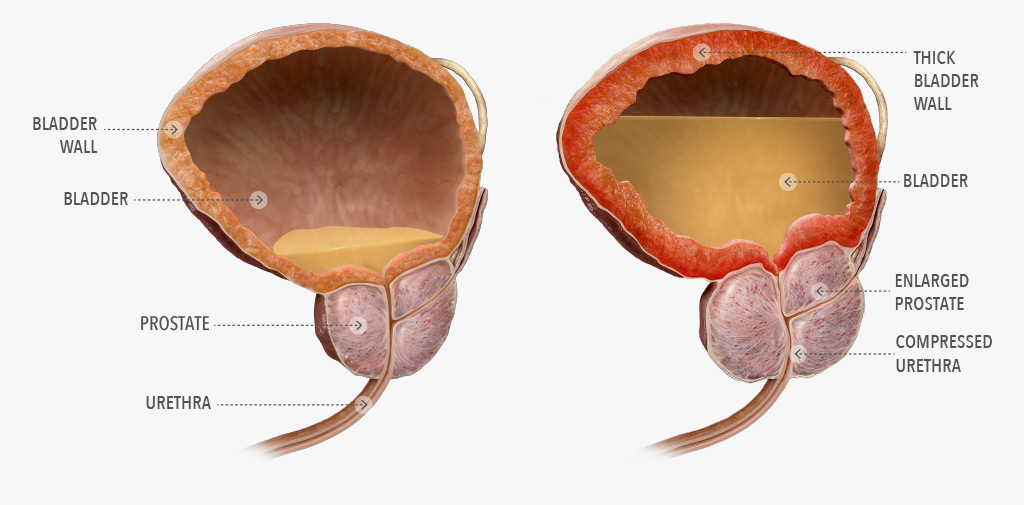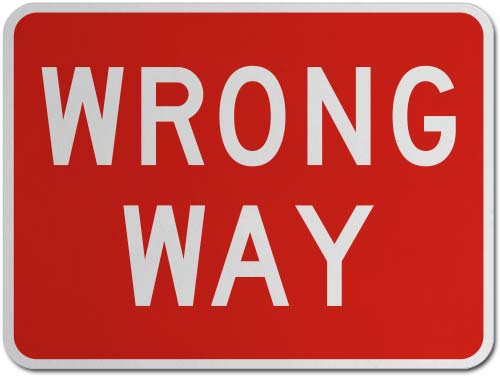
BPH - Benign Prostatic Hyperplasia

For many men, in fact, most men, as we age the prostate enlarges and begins to cause problems. The prostate surrounds the urethra (the pee tube) like a doughnut. As that doughnut grows, the channel through the middle (the doughnut hole) shrinks and begins to put pressure on the urethra. This leads to problems peeing.
What do men experience who have this problem? A bunch of issues that you wouldn’t necessarily expect. The most common issues of men suffering from this problem include going to the bathroom frequently, waking up at night to use the bathroom, weak urine stream, or needing to strain. If the problem has become severe, you may even have developed urinary tract infections, bladder stones, or even infections in the prostate or testicles. Yep, if you’ve had any of those, there’s a good chance you have a prostate issue.
The good news is there are a bunch of treatment options, many of them new and huge advancements from the past, that can help alleviate this suffering.
For about the last 20 years, the mainstay treatment for an enlarged prostate has been meds. Most commonly, this is a medication called Flomax, or tamsulosin. Medications such as Rapaflo (silodosin) and Uroxatral (alfuzosin) are also in this class. They’re generally pretty effective at reducing your symptoms, but they do come with some side effects. There are two primary side effects you should know about: one is that they cause some dizziness and light-headedness, two is that they often cause a condition called retrograde ejaculation. This is a condition where the fluid from an orgasm goes backward into the bladder instead of out the penis.
There is another class of medications that includes Proscar (finasteride) and Avodart (dutasteride) that has its own set of pros and cons. These medications are quite effective if you have a very large prostate (they shrink the prostate) but don’t do much for most patients. Plus, you run the risk of developing tender and enlarged breasts and a loss of sex drive.
The other option besides medications is a procedure to relieve the obstruction. This is where the real advancements have been made recently. In the past, we had to go in surgically and hollow-out the inside of the prostate. This is the old roto-rooter surgery, also known as a TURP or transurethral resection of the prostate. This has been a mainstay of the world of urology for years, and many decades was the most commonly performed surgery in the United States. It remains a useful surgery, but the recovery is long, and the side effects are significant. The surgery is usually performed in the hospital under general anesthesia, i.e. you’re totally asleep. Many people need a catheter for at least a few days. There is often bleeding and burning when you pee for a while. There are real risks of erectile dysfunction and problems with ejaculation after this procedure is so common that they are nearly ubiquitous.

Some of the newer approaches are easier for patients, safer, and have a faster recovery. One of these options is called UroLift and is a true advancement in the world of urology. This is a procedure that can be done in the office and is nearly just as effective as the roto-rooter but has a faster recovery and fewer side effects. UroLift often will decrease your needs for medications, improve your symptoms, and has no risk of sexual side effects. No other BPH option, either medications or surgery, can make that claim. At Midtown Urology we are big proponents of the UroLift procedure and are some of the most experienced doctors at performing this procedure. There are only four doctors in the state of Texas who are designated UroLift Centers of Excellence…and #1 and #2 both work at Midtown Urology. In fact, we routinely train other physicians on how to perform the UroLift procedure. If this sounds like something that might interest you, please come see us for a consult. It really is a light-years advance.

There are other treatment options besides UroLift that are definitely viable alternatives. We talked about the TURP surgery above. For the right patients, some of the alternatives offer great results and few (but not zero) side effects. There is a laser surgery to open up the prostate called the Greenlight laser. There is a procedure called Rezum that injects steam into the prostate tissue to so that tissue dies away and relives the obstruction. For very large prostates there is a robotic surgery to remove most of the prostate. There is a new procedure that uses high-pressure water, called Aquablation, to open a channel in the prostate. In the past, we’ve used microwaves and stents and injections all kinds of other options to treat BPH, but none were as safe and effective as the options we can offer today.

So, if you’ve been suffering from prostate problems, talk to us at Midtown Urology. We can help you get back to a normal life. We can diagnose your condition and help you think about which treatment option will be best for you. It will also be important for us to be sure your problem is an enlarged prostate and not something like a urinary tract infection or even something scary like prostate cancer. We can help with those concerns too.
This content is not intended to be a substitute for professional medical advice, diagnosis, or treatment. Always seek the advice of your physician or another qualified health provider with any questions you may have regarding a medical condition.
You Might Also Enjoy...


Navigating BPH Therapy

Understanding Low Testosterone

Treating Erectile Dysfunction with Low-Intensity Shockwave Therapy

KSPtabs...an over the counter kidney stone solution.





